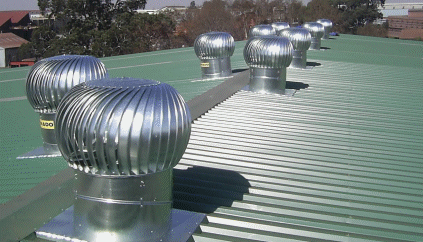While it is hardly a secret that high-quality air is something of a workplace essential, it also tends to be something that is routinely overlooked. Which to a certain extent is understandable, as the fact that you can’t normally see or feel the air you breathe means it’s natural to take it for granted. Nevertheless, it is only by paying close and ongoing attention to air quality that it becomes possible to consistently provide all members of the workforce with clean, safe and healthy air.
This is precisely the reason why regular Local Exhaust Ventilation Systems Testing is something of a prerequisite in any workplace where such installations are required. There isn’t a piece of machinery in the world that can be expected to do its job flawlessly and continually, without the occasional tweak from the professionals. But even with regular testing and inspection, there will always be certain instances where a full-scale upgrade of current ventilation systems is called for.
It may sound like a rather sizeable expense to consider and one that may cause disruption. But at the same time, there are several distinct advantages that come with upgrading a workplace’s ventilation system – including the following five examples:
1 – Cooler Temperatures
First of all, a high quality ventilation system can play a surprisingly effective role in keeping internal temperatures cooler and more comfortable. Trapped heat has the potential to cause all manner of problems across a variety of workplaces. From overheating equipment to uncomfortable employees to the unfortunate expense of having to have the air conditioning systems running at full blast day in and day out, it’s amazing how big of a difference a few degrees in either direction can make. The most innovative ventilation systems available these days not only encourage plenty of fresh air to enter and circulate, but also actively contribute to the removal of excess heat.
2 – Employee Efficiency
As already touched upon, it is unrealistic (and quite unfair) to expect members of the workforce to work to their maximum capacity at all times if they are excessively hot and uncomfortable. Workplaces that are stuffy, sticky and generally too hot for comfort do absolutely nothing for employee morale, which in turn does absolutely nothing for efficiency, productivity and output. It’s the classic example of happy and comfortable workers being much better workers than those to the contrary. And of course, insisting that the workforce gets its job done in conditions that are not exactly agreeable doesn’t say a great deal about the attitude of the business in general.
3 – Sickness and Absence
Remaining with the workforce for a moment, it’s important to remember that there is a very fine line between working conditions that are uncomfortable and those that are fast becoming a hazard to health. Every year without fail, the UK economy loses billions in lost working hours attributed entirely to workplace conditions. When you aren’t provided with plenty of fresh air or have to spend long periods of time in environments that are too hot and stuffy, the likelihood of you coming down with any number of illnesses increases exponentially. Employee sickness and workforce absence in general can be two of the most devastatingly costly and damaging problems any business can face. Suffice to say, failure to provide sufficient fresh air isn’t exactly a proactive approach.
4 – General Safety
It’s also worth bearing in mind the fact that when the temperature within any given working environment is kept to a comfortable coolness, there is inherently a much lower risk of fire breaking out. In instances where plenty of machinery or electronic devices are present in particular, keeping the whole working environment cool can have a marked impact on overall safety. It’s an extremely simple yet effective approach to risk management which has the potential to benefit quite literally everyone and everything across the entirety of the business.
5 – Long-Term Savings
Last but not least, while it may be fair to say that an upgrade to existing ventilation systems may not come cheap, it most certainly has the potential to breed a great many long-term savings. Climate control systems have a tendency to be some of the most energy inefficient installations imaginable. High quality ventilation systems have the potential to massively reduce dependency on climate control installations. Not only this, but to upgrade to a higher standard ventilation system for the workplace is to significantly reduce maintenance and repair bills for the long-term, while at the same time reaping the benefits of improved overall productivity and output.




